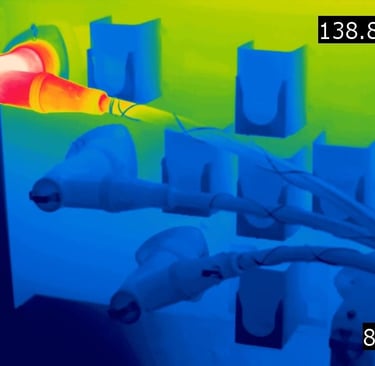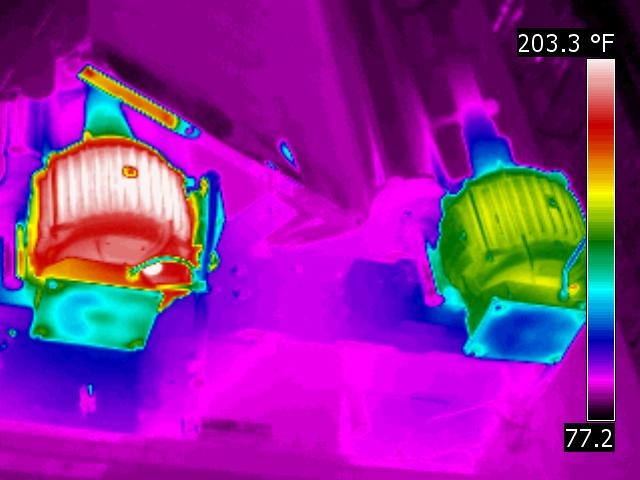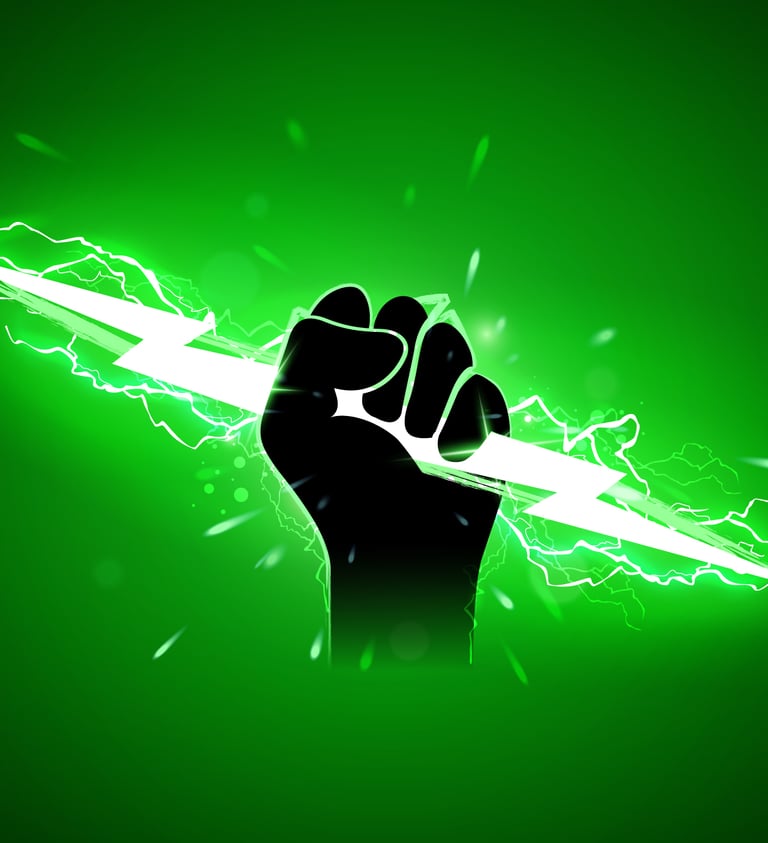Thermal Imaging: Application & Benefits in Electrical Services
August 13, 2025
Thermal imaging, commonly known as infrared thermography, is a non-invasive diagnostic method that detects heat variations in electrical systems using specialized cameras. This technology provides a powerful tool for electrical contractors in residential, commercial, and industrial settings.
In commercial and industrial environments, thermal imaging is integral to preventive maintenance programs. Infrared inspections can pinpoint overheated components—such as loose connections, defective circuit breakers, or overloaded panels—before they escalate into costly failures, unscheduled downtime, or fire hazards (1). Annual or routine scans are often required by insurance carriers or regulatory bodies like the National Fire Protection Association. Facilities benefit from increased equipment lifespan, lower repair and insurance costs, and safer operations without needing system shutdowns (2).
For residential applications, thermal imaging helps detect electrical hotspots in panels, outlets, and wiring systems—often invisible to the naked eye—helping to prevent house fires and ensure occupant safety. Home inspectors also use thermal cameras to spot anomalies during visual inspections, such as failing connections or overloaded circuits (3).
Across both domains, thermal imaging enables non-contact, safe, and efficient inspections, even when systems are live, minimizing disruption and enhancing safety. It also helps with energy efficiency assessments—by identifying thermal bridging, insulation gaps, or energy loss through walls and windows—which translates to lower utility bills and improved building performance (4).
Providing real life examples, the first photo below shows three elbow fuse connectors - the top connector is operating at approximately at 138 degrees F, while the 2nd & 3rd are operating at approximately 90 degrees F. The second photo shows two small industrial motors - the motor on the left operating at over 200 degrees F and the motor on the right operating around 110 degrees F (5). These images show how electricians can identify issue areas and consequently save their customers money both in troubleshooting labor costs and resolving component issues prior to fault.




At Green Light Electrical Contractors, thermal imaging allows our team to detect problems early—enhancing safety, reliability, efficiency, and cost-effectiveness in both homes and commercial properties. Ryan Sherman, Master Electrician and Owner of Green Light admits that it’s not a tool he uses on a regular basis, but it has identified serious issues on multiple occasions including loose power rail/busbar connections, overloaded panels, and overheating breakers. Green Light uses infrared cameras to troubleshoot electrical current and motor output degradation, as well as with annual commercial maintenance plans where the status of high-end machinery is documented and trends analyzed.
Please contact us here at Green Light Electrical Contractors with any questions about how you can benefit from thermal imaging.
(1) Rost, B., “Electrical Infrared Inspections & Why They’re Important”, www.ncetest.com/.
(2) “Why Your Building Needs an Infrared Electrical Inspection”, www.tfp1.com/, 11/21/2021.
(3) McCabe, Tom., “5 Benefits to Thermal Imaging Inspections”, www.solidiuminspections.com/.
(4) “The Benefits of Thermal Scans for Business and Large Real Estate”. www.flir.com/discover/industrial/, 5/1/2024.
(5) “Why your business needs thermal condition based monitoring”. www.flir.com/discover/industrial/, 5/5/2024.Write your text here...
Get in touch


© 2024. All rights reserved Licensed & Insured MD (18909) * Privacy Policy
Green Light Electrical Contractors, LLC
(443) 579-5001 | Info@GLECmaryland.com | 66 E. Main St. Suite 200, Westminster, MD 21157 | www.glecmaryland.com
